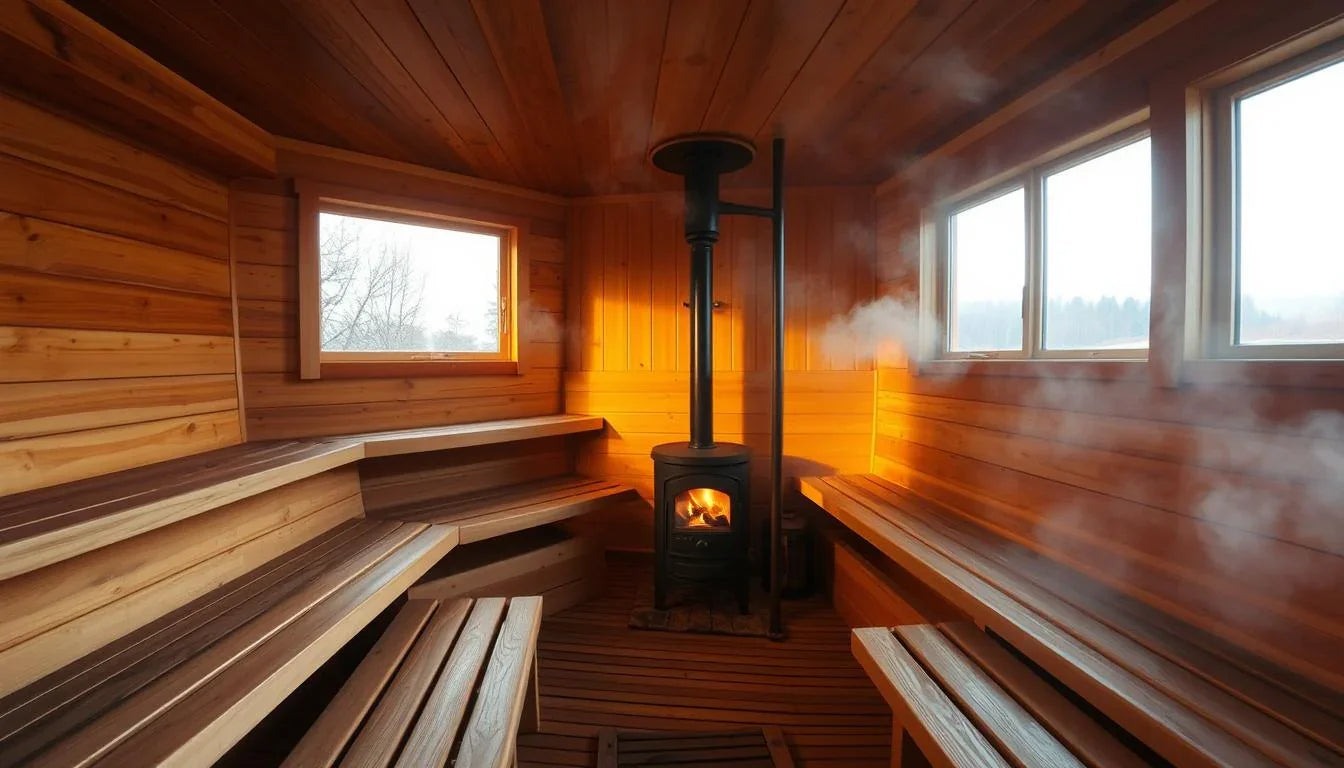
Is It Good to Sauna When Sick: What You Need to Know
Is It Good to Sauna When Sick: What You Need to Know
This introduction outlines practical, evidence-based guidance on using heat therapies during a cold or flu. Adults average 2–3 colds yearly, and regular heat exposure can support long-term immune health. Observational studies link routine sessions with fewer colds, yet an active illness poses different challenges.
The guide explains what happens inside the body during an infection and why hot rooms may feel soothing while adding physiological stress. High temperatures raise heart rate and fluid loss, which can worsen dehydration and fatigue.
Readers will find a balanced look at potential benefits and meaningful risks. The article compares traditional, infrared, and steam options and offers a clear decision framework for safer choices. Short sessions, careful hydration, and attention to fever or worsening signs get special emphasis.

Key Takeaways
- Routine heat use may lower future cold frequency but does not cure active illness.
- Heat can soothe symptoms yet also increase dehydration and cardiovascular strain.
- Avoid hot rooms with fever, severe weakness, or marked dehydration risk.
- If choosing a session, keep it brief, hydrate, and stop at any worsening sign.
- Infrared, traditional, and steam differ in temp and humidity; pick options wisely.
Quick Answer: Should You Use a Sauna When You’re Sick?
Before stepping into a heated room, consider how extra heat affects recovery pathways. Heat exposure can raise heart rate and boost fluid losses, which increases dehydration risk and cardiovascular strain during an active cold or flu.
Short rule: avoid a sauna if a fever exists, symptoms are worsening, or there is marked weakness. Those with chest tightness, severe cough, shortness of breath, or dizziness should skip heat exposure entirely.
If symptoms remain mild and someone chooses using sauna cautiously, keep sessions brief (15–20 minutes), pick lower temperatures, and hydrate well before and after. Perceived relief for congestion or aches is temporary and does not speed recovery.
https://www.youtube.com/watch?v=3-cAdPLJ0xo
- Stop immediately if dizziness, nausea, or breathing worsens.
- Prefer warm showers or steam inhalation for nasal relief with less physiological stress.
- Consult a clinician if pregnancy, heart disease, or other chronic conditions are present.
| Situation | Recommendation | Why |
|---|---|---|
| Fever or worsening symptoms | Avoid | Risk of overheating and greater dehydration |
| Mild symptoms, stable | Short, low-heat session + hydrate | Possible symptom relief, lower risk if careful |
| Chest or breathing issues | Do not enter | Heat can worsen respiratory strain |
Understanding Colds, Flu, and Your Immune System
Understanding differences between mild upper respiratory infections helps guide safe choices during recovery. The common cold usually starts gradually with a runny nose, sore throat, and cough. Most cases clear in about 7–10 days.
By contrast, flu often begins suddenly. Fever tends to be higher and body aches feel stronger. Fatigue can linger longer and severity rises compared with a typical cold.

How viruses interact with the immune response
Both conditions come from viruses that spread via droplets and contaminated surfaces. The immune system responds with inflammation, which causes many familiar symptoms while the body clears the infection.
"Fever represents a regulated rise in temperature that can aid host defenses; external heat differs from a physiological fever."
- CDC notes adults get about 2–3 colds each year, so prevention matters for public health.
- Over-the-counter remedies ease symptoms, but viral clearance relies on the immune response.
Sauna Science 101: What Heat Does to the Body
Heat exposure triggers rapid shifts across circulation, hormones, and sweat production. Understanding those responses helps readers weigh health benefits against risks during an active infection.
Body temperature, heart rate, and blood circulation
Rising air temperature or radiant heat raises core body temperature and increases heart rate. Blood vessels dilate, moving more blood toward the skin and increasing overall circulation.
Stress response, dehydration risk, and electrolyte balance
Sweating reduces body fluids and electrolytes; even a short session can push someone toward dehydration without deliberate replacement. The heat response also triggers hormonal shifts that act as physiologic stress, which may worsen weakness during illness.
Traditional, infrared, and steam rooms: how they differ
Traditional rooms run about 150–195°F with dry air. Infrared units heat tissues at lower air temperatures (120–150°F). Steam spaces stay near 110–114°F but feel hotter because humidity limits evaporative cooling. Claims that sweat clears toxins are overstated; sweat primarily contains water plus small amounts of salts and lipids.

- Cardiovascular shifts can feel invigorating when healthy but add strain during active infection.
- Choose lower temperatures and brief exposure when symptoms are mild and stable.
Do Saunas Help Prevent Colds? What Research Suggests
Long-term heat routines may change how often people pick up seasonal colds. Observational work suggests regular thermal sessions link with lower infection rates over months, rather than faster recovery once ill.
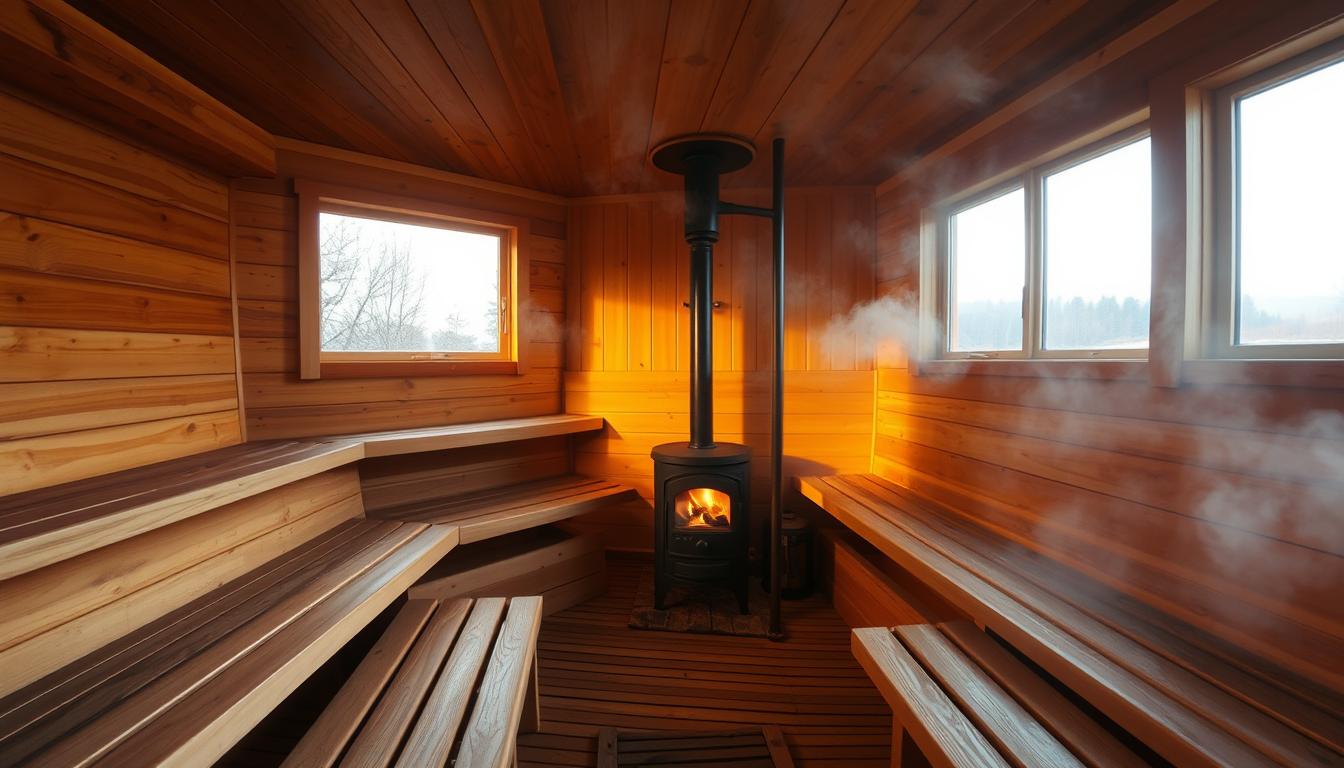
Regular sauna use and immune system support
A 1990 Austrian study tracked 50 adults for six months. Those who kept routine visits reported about half as many colds in the final three months.
Researchers found no meaningful differences in duration or severity of a common cold after onset. That implies heat exposure may act as a preventive habit, not a treatment for active illness.
Evidence on reduced frequency of colds with routine sessions
Possible mechanisms include modest cardiovascular conditioning, stress reduction, and indirect support for the immune system. Improved sleep, circulation, and relaxation likely play roles.
- Regular sessions may lower the number of colds over time.
- Evidence does not show shorter or milder colds once infection begins.
- People with chronic conditions should integrate heat therapy into broader health plans, not substitute for medical care.
| Finding | Practical takeaway | Why it matters |
|---|---|---|
| Fewer colds reported in routine users | Consider starting a moderate routine when well | May reduce infection frequency during peak seasons |
| No change in cold duration | Do not expect heat sessions to shorten an active cold | Treatment requires rest, fluids, and clinical care as needed |
| Benefits tied to overall health habits | Pair sessions with sleep, hydration, and hygiene | Maximizes preventive potential while limiting risks |
is it good to sauna when sick
During an active infection, extra thermal load alters recovery signals and cardiovascular strain. The body already uses energy fighting viruses, so added heat can push heart rate higher and raise fluid losses.
Why acute illness changes the equation
The immune response increases metabolic demand and often causes fatigue. Adding external heat magnifies that demand and may cause lightheadedness or worsening weakness.
Short-term relief versus potential risks
Warm, humid air may ease nasal congestion and muscle aches for brief relief. Studies show this comfort does not clear viral infections or shorten a cold.
- Risks: higher heart rate, dehydration, and breathing strain with severe congestion or fever.
- Stop immediately if dizziness, nausea, or breathing worsens.
When mild symptoms might allow cautious use—and when to skip
If symptoms are truly mild and stable, a brief, lower-heat session and careful hydration may be reasonable. Avoid public facilities while ill and prefer at-home, lower-intensity options for safer relief.
Clear Risks to Weigh: Fever, Dehydration, and Overheating
Heat can push an already taxed body past safe limits during an active infection. Careful weighing of risks helps readers choose safer options.
Signs you should avoid or exit immediately
Do not enter if a fever is present; external heat raises core temperature and may worsen overheating.
- Light-headedness, fainting, or sudden weakness — exit right away.
- Nausea, palpitations, or unusual shortness of breath — cool down and seek help.
- Headache, confusion, or worsening cough — stop the session and rest.
Pre-existing conditions and when to consult a provider
People with heart disease, uncontrolled blood pressure, pregnancy, or severe respiratory conditions should avoid heat exposure during an infection.
Medications such as diuretics or blood-pressure drugs alter hydration and circulation. Ask a clinician before any heat use.
| Risk | Action | Why |
|---|---|---|
| Fever | Avoid heat | Raises core temperature and delays recovery |
| Dehydration | Hydrate, skip session | Sweating plus low intake worsens symptoms |
| Cardiac or respiratory conditions | Seek medical advice | Heat increases cardiovascular strain |
| Medications affecting fluids | Consult clinician | Drug interactions alter safe temperature response |
How to Use a Sauna Safely During Recovery
Small adjustments in timing and temperature make post-illness heat safer and more helpful.
Time and temperature: Keep each sauna session brief—about 15–20 minutes. Choose lower temperatures and shorter exposure when energy feels reduced. A single, mild session often gives comfort without excess strain.
Listen to your body: Monitor breathing, dizziness, and fatigue. New lightheadedness, worsening cough, or sudden weakness are cues to stop, cool down, and rest. Wait an extra day if unsure.
Hydration and recovery: Pre-hydrate and rehydrate after a session. Sit for a calm cool-down and check how the body responds before resuming activity. Avoid alcohol and limit caffeine on heat days.
Hygiene and public spaces: Skip public saunas if still contagious. Clean any home unit after use and practice good hand hygiene to protect others.
| Action | Practical tip | Reason |
|---|---|---|
| Session length | 15–20 minutes | Limits cardiovascular and fluid strain |
| Temperatures | Use lower heat when recovering | Reduces chance of overheating |
| Spacing | Allow recovery days between sessions | Prevents stacking stressors |
| Symptoms | Stop if dizziness or breathing worsens | Protects safety and supports recovery |
Hydration, Rest, and At-Home Relief Options
Simple home measures can ease symptoms and support recovery without extra heat stress.
Stay hydrated with water and electrolytes
stay hydrated by sipping water and electrolyte-rich fluids. Adequate fluids help thin mucus and support circulation. Oral rehydration solutions, broths, and herbal teas count as helpful choices.
Plenty rest and lower stress
plenty rest during daylight naps and consistent nighttime sleep helps the immune response. Gentle breathwork, light stretching, and quiet time reduce stress and free energy for healing.
Home alternatives for congestion relief
Warm showers, brief steam inhalation, and cool-mist humidifiers give temporary relief for congestion. These methods do not cure viral infections; most common cold cases resolve within 7–10 days.
"Hydration and rest remain the most reliable strategies for symptom control and steady recovery."
- Prioritize fluids and water intake to aid mucus clearance.
- Pair OTC symptom relief with rest and hydration; follow labels.
- Avoid public saunas or saunas visits while contagious; use mild heat only at home and briefly.
| Action | Why | Practical tip |
|---|---|---|
| Hydrate | Thins secretions, supports circulation | Alternate water with electrolyte drinks |
| Rest | Boosts immune function | Prioritize sleep and daytime breaks |
| Home relief | Temporary congestion relief | Use warm shower or humidifier |
Choosing the Right Heat: Traditional Sauna, Infrared, or Steam
Temperature and humidity shape how heat affects breathing, circulation, and comfort.
Pros and cons for congestion relief and comfort
Traditional rooms deliver very high temperatures and dry air. Many find that intense heat feels invigorating, though this option can stress circulation and raise body temperature quickly after illness.
Infrared units run at lower air temperature, warming tissues directly. Short, gentle sessions may feel milder during recovery and offer some comfort without the same cardiovascular load.
Steam spaces use lower numbers on the thermostat but high humidity. That moist heat often gives brief congestion relief and a sense of openness in the nose. Relief is transient and does not shorten illness.
- Traditional: high heat, dry air — potent but more taxing on blood flow.
- Infrared: lower air heat, direct tissue warming — gentler for short use.
- Steam: humid warmth — helps congestion briefly, can feel intense for some.
| Option | Typical temp | Best for |
|---|---|---|
| Traditional | 150–195°F | Invigoration; avoid if fragile after illness |
| Infrared | 120–150°F | Short, milder sessions during later recovery |
| Steam | ~110–114°F (humid) | Brief nasal relief; stop if breathing worsens |
Choose the mildest option you tolerate. Prioritize facilities with good ventilation and cleanliness. Monitor for dizziness or increased fatigue and stop if symptoms worsen.
Make the Call: A Simple Decision Framework
A quick decision flow helps weigh short-term relief against possible added strain on the body.
First check: If you 're sick with a fever, chest tightness, shortness of breath, or notable dizziness, do not use heat this time. These signs indicate higher risks and need rest or medical review.
Second check: Assess symptoms severity. Moderate or severe signs mean skip a session and re-evaluate after 24–48 hours of fluids and sleep. Mild, stable complaints may allow a cautious trial.
Third check: Review personal conditions and medications. Cardiovascular disease, pregnancy, or diuretics need clinician input before any use.
- If you proceed, limit trials to 15–20 minutes and pick low-to-moderate heat times.
- Plan a seated cool-down and hydrate before and after.
- Set exit rules: any new dizziness, nausea, or breath change means end the session.
- Avoid public saunas while potentially contagious with a common cold; choose private or at-home options.
| Check | Action | Why |
|---|---|---|
| Fever or severe breathing | Do not use heat | Raises core temperature and increases cardiac strain |
| Moderate symptoms | Wait 24–48 hours | Rest and fluids lower severity and improve safety |
| Stable mild symptoms | One short session, hydrate | May provide comfort with lower risk if monitored |
| Medications / heart conditions | Consult clinician | Drugs and cardiac issues alter tolerance and safety |
Final rule: If the framework points to "not today," pick warm showers, steam inhalation, or rest. Reassess in a day or two as severity drops; postponing a visit now often speeds return to normal times.
Conclusion
Summing up: routine thermal sessions may help long-term health and link with fewer colds, yet acute infections change the balance between benefit and risk.
During active illness, added heat raises heart rate, fluid loss, and core body temperature. Prioritize plenty rest, water and electrolyte replacement, and simple home measures for quick relief.
If someone chooses brief exposure late in recovery, keep duration low, pick lower heat, and stop at any new dizziness or breath changes. Avoid public spaces while contagious and consult a clinician for heart, pregnancy, or chronic conditions.
Bottom line: use saunas as part of a balanced wellness routine, not as a cure for the common cold or flu. Patience, fluids, and rest remain the surest route back to baseline health.
FAQ
Can using a heated room help relieve nasal congestion and muscle aches?
Short sessions in warm, humid environments often ease congestion and soothe sore muscles by loosening mucus and increasing circulation. Keep time brief and monitor symptoms closely; relief is temporary and does not cure viral infections.
Does routine use of heated therapy reduce the chance of catching colds?
Regular, moderate exposure has been linked in some studies with fewer reported colds and improved markers of immune function. Findings vary by study, so routine habits should complement proven measures like vaccination, hand hygiene, and sleep.
When does an acute respiratory illness make heat exposure unsafe?
High fever, rapid heartbeat, lightheadedness, severe cough, or breathing difficulty are signs to avoid hot environments. These conditions raise the risk of dehydration and cardiovascular stress and warrant resting and seeking medical advice.
Is there a safe duration and temperature if someone has mild cold symptoms?
Limit sessions to about 10–15 minutes at moderate temperatures and pause immediately for dizziness or worsening symptoms. Maintain hydration and consider lower heat options like steam inhalation or warm showers as gentler alternatives.
How does heat affect body temperature and heart rate during a session?
Heat raises core and skin temperatures, increases heart rate and blood flow, and activates sweat-driven cooling. These responses can feel therapeutic but also stress the cardiovascular system, especially during illness.
Are infrared cabins safer or better for people with mild colds than traditional heated rooms?
Infrared delivers radiant heat with lower ambient temperatures, which some find more tolerable. Benefits for congestion are similar, but individual comfort and medical status determine suitability—consult a clinician for chronic conditions.
What hydration and electrolyte steps should someone take before and after a session?
Drink water or an electrolyte beverage before and after exposure. Avoid alcohol or heavy meals beforehand. If sweating heavily, replace sodium and potassium with balanced fluids to reduce dehydration risk.
Can using a public heated facility spread viruses to others?
Yes. Close contact and shared surfaces increase transmission risk. Stay home if contagious, practice good hygiene, and avoid public spaces until symptoms subside to protect others.
Which pre-existing medical conditions require medical clearance before using heated therapy?
Heart disease, uncontrolled hypertension, pregnancy, recent surgery, severe respiratory disease, and certain neurologic disorders can make heat exposure risky. Consult a healthcare provider before use.
Are there safer at-home options for symptom relief if avoiding a public facility?
Yes. Warm showers, steam inhalation over a bowl, humidifiers, and saline nasal rinses provide congestion relief without the cardiovascular stress of high heat. Combine with rest, fluids, and OTC symptom care as appropriate.
How should someone decide whether to use warm therapy during recovery?
Weigh symptom severity, fever presence, cardiovascular health, and ability to hydrate. Mild congestion and no fever may allow cautious, brief sessions. If unsure, prioritize rest and consult a clinician for personalized guidance.

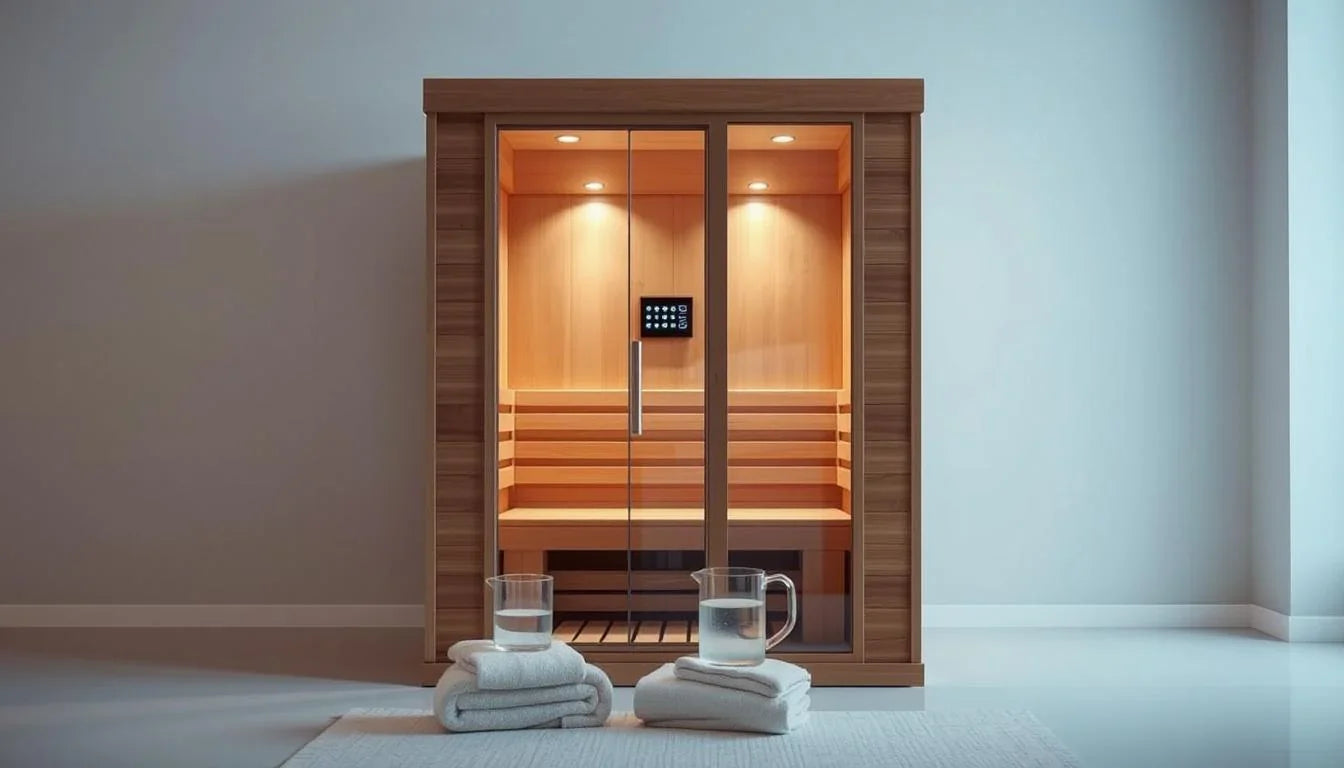
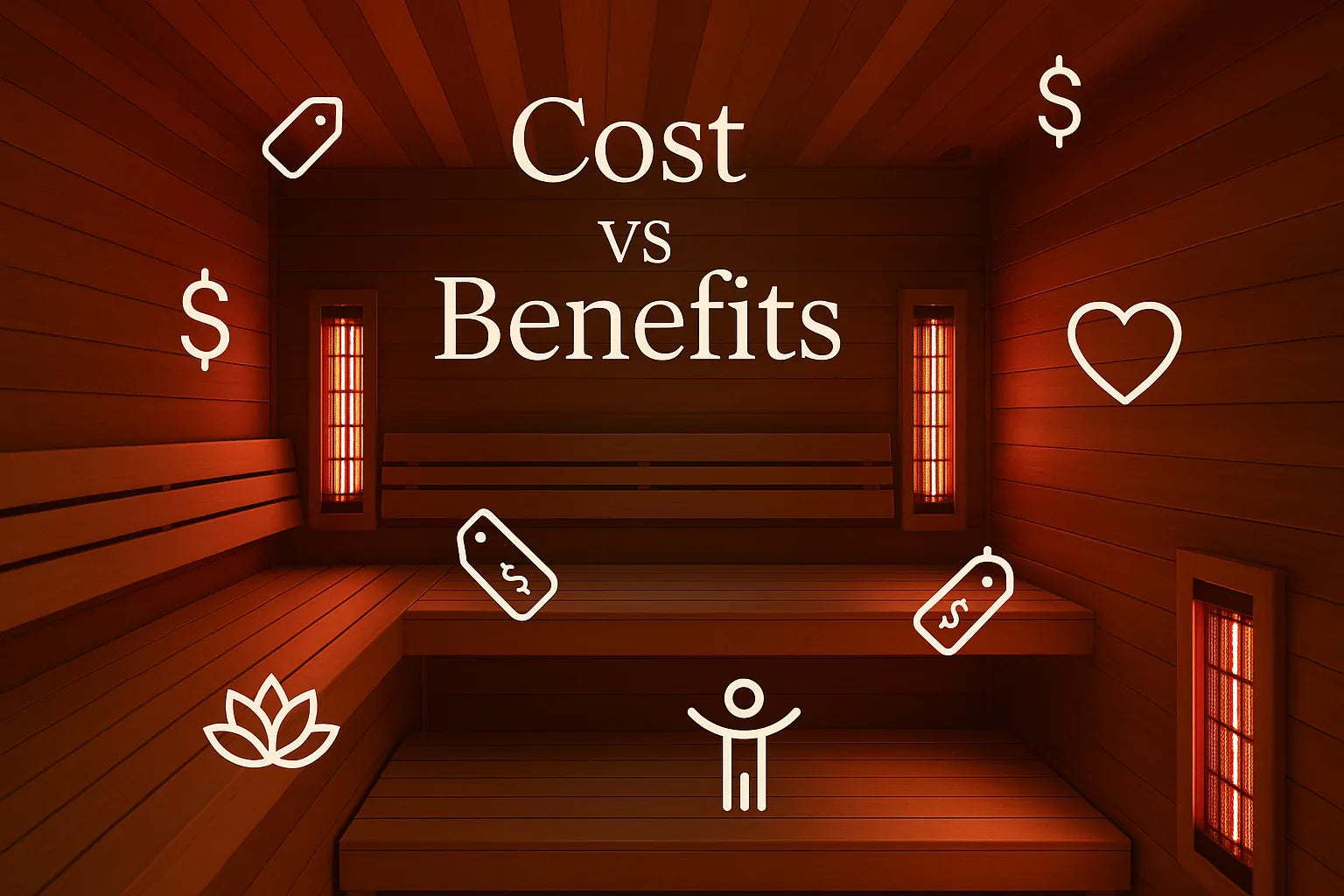

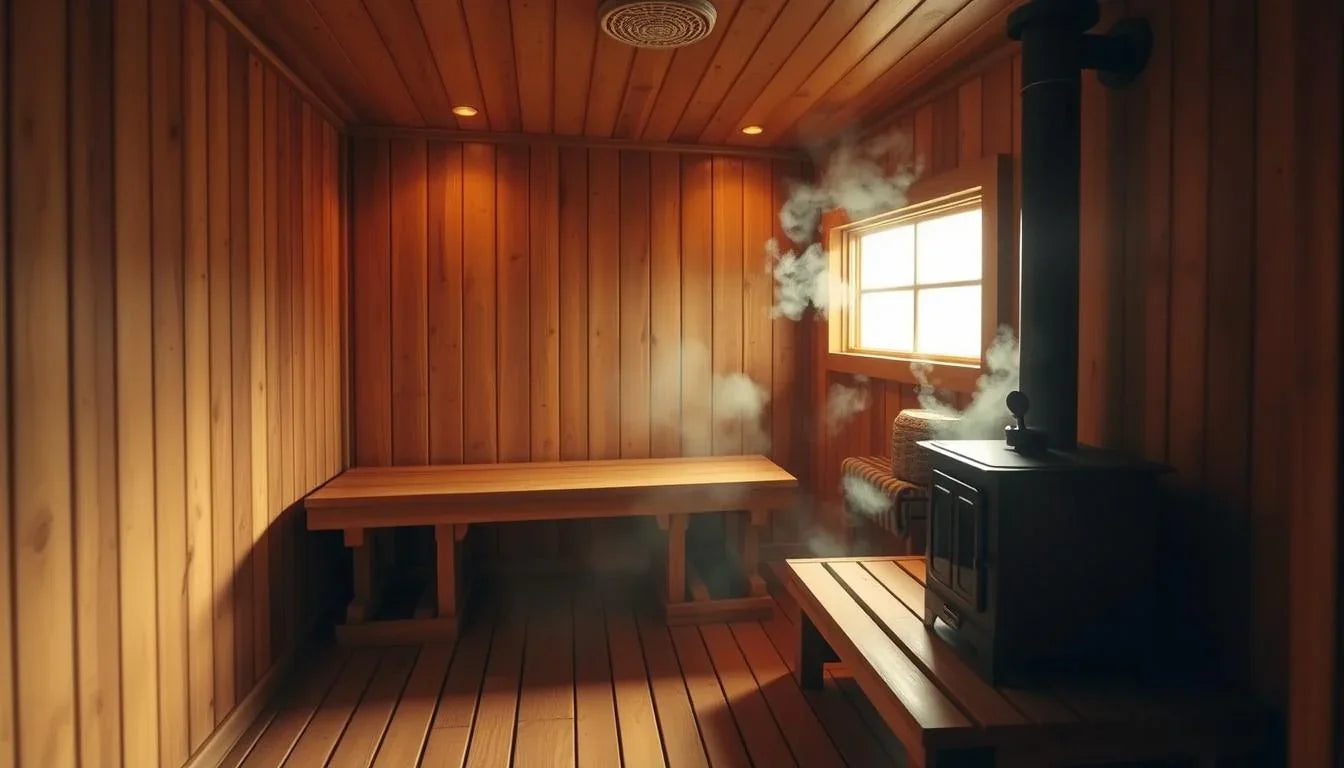

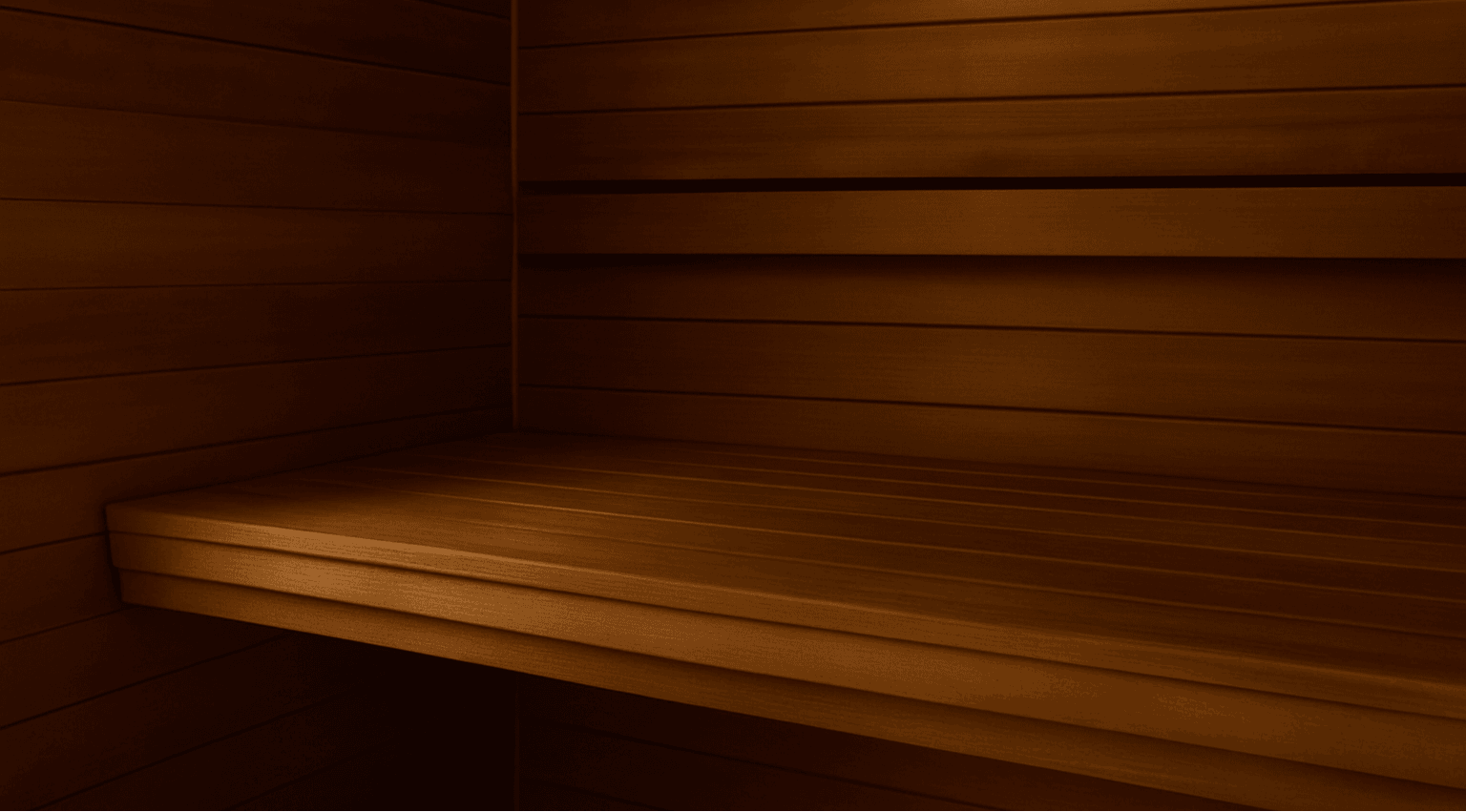
Leave a comment
This site is protected by hCaptcha and the hCaptcha Privacy Policy and Terms of Service apply.